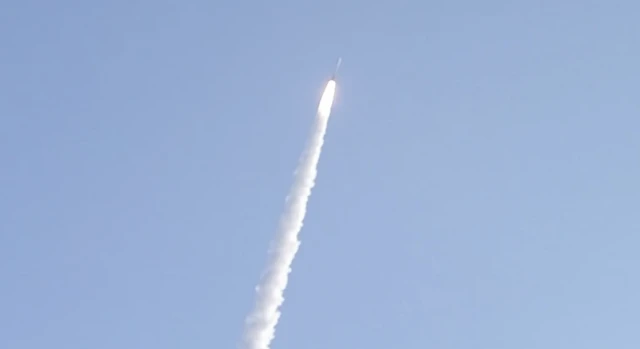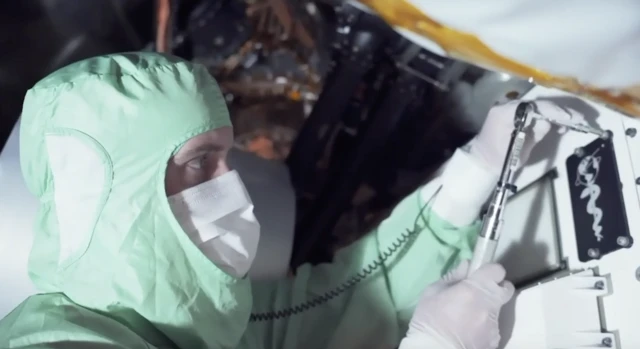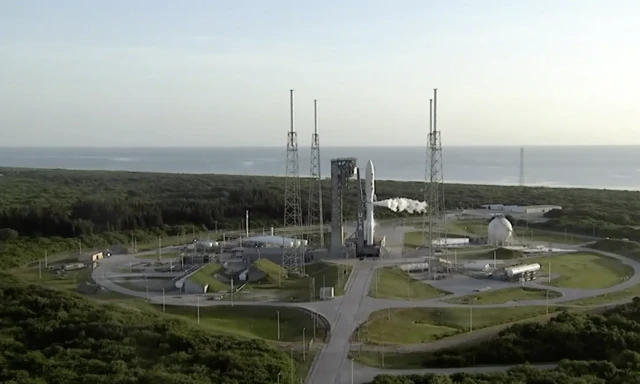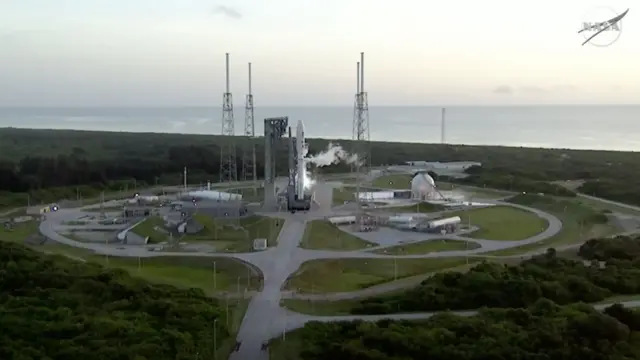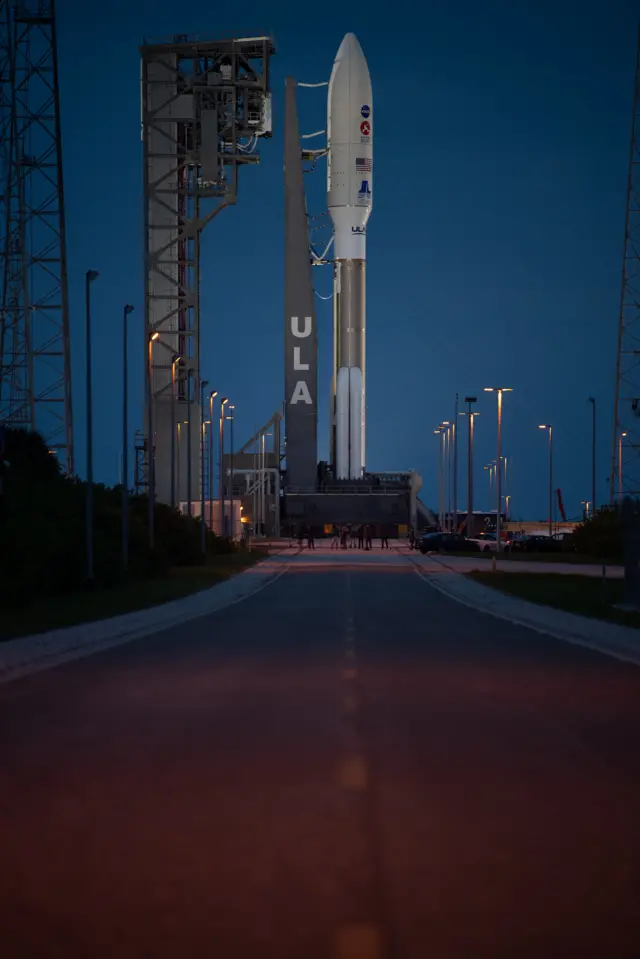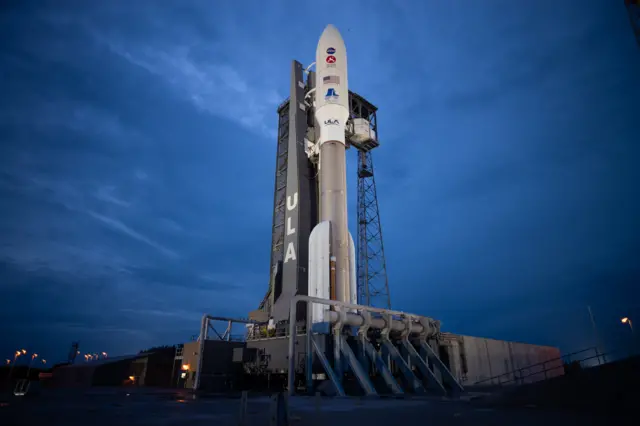Humanity's 'first roundtrip to another planet'published at 13:38 BST 30 July 2020
Thomas Zurbuchen, Nasa Associate Administrator for the Science Mission Directorate, says there are two tricky parts of Perseverance's journey.
The first is heading in the right direction from Earth to Mars.
"In February, when Mars comes, you wanna be right there," he says. "The second one that will make us nervous in February is entry, descent and landing."
Mars' atmosphere makes things difficult - and you can't just parachute in like on Earth.
He says Perseverance's mission is also unique because it will be humanity's first roundtrip to another planet - and will let scientists in the best labs around the world analyse Mars samples.
"For the first time in decades, [it's] the first astrobiology mission and we're ready for it," Zurbuchen says.
"It's an amazing first in that respect."
Perseverance will be packaging its most interesting rock and soil samples in small containers for later retrieval by missions that will leave Earth in 2026.
 Image source, NASA
Image source, NASAPerseverance will 'cache' rock and soil in small tubes

